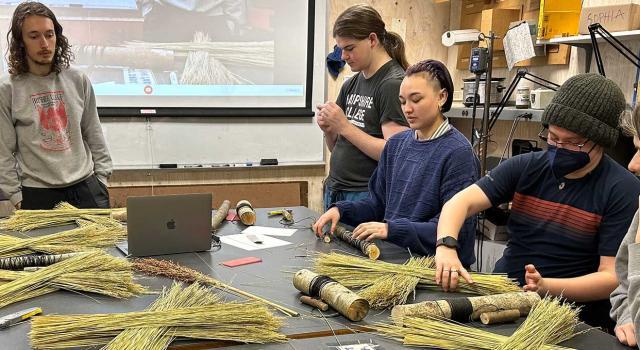Blair McLaughlin Saves Trees One Seed at a Time
In the era of global warming, climate change could well wipe out entire species of trees. Fortunately, they have a formidable ally.
Assistant Professor of Ecology Blair McLaughlin is leading a team dedicated to studying particularly resilient populations of oaks endemic to California, trees that thrive in the arid terrain typical of their native habitat. How, the team wondered, could these oaks be so resistant to increased heat, dryness, and even drought?
The answer lies in hidden water sources.
“Because the water is commonly underground, it wasn’t immediately obvious how the California oaks are surviving,” says McLaughlin. “Now that we understand that they can often survive even extremely hot and dry climates if there’s enough subsurface water, we can protect the trees by protecting the groundwater flows.”
The team’s research — supported by grants from the U.S. Department of Agriculture and the National Science Foundation — put the idea of establishing water-resourced refuges for these oaks on the map with the article “Hydrologic refugia, plants, and climate change,” published in Global Change Biology in 2017. McLaughlin served as lead author.
“Once we can identify where these refuges are, we can protect these areas through targeted land acquisition for conservation, protecting groundwater and sustainable land-use practices,” she says.
McLaughlin started working full time at Hampshire this fall, coming to campus from the University of California Santa Cruz, where she was a visiting researcher. Currently teaching two courses, Integrated Sciences: Microbes in Greywater Treatment and an introductory class on ecology, her expertise and the mentorship she brings to students will open doors to doing pathbreaking work in environmental science and conservation.
Looking toward the future of the species in a rapidly warming world, McLaughlin has begun creating a climate-adaptive genetic bank for the California blue oak, in partnership with the conservation NGO Point Blue and with support from National Geographic and the Wildlife Conservation Society.



